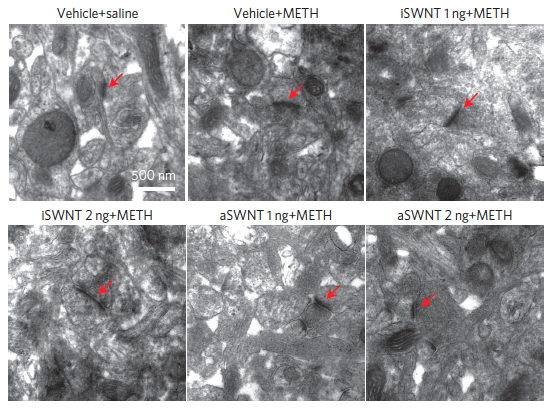Hot Off the Press! – March 2016

Xue, Xue; Yang, Jing-Yu; He, Yi; Wang, Li-Rong; Liu, Ping; Yu, Li-Sha; Bi, Guo-Hua; Zhu, Ming-Ming; Liu, Yue-Yang; Xiang, Rong-Wu; Yang, Xiao-Ting; Fan, Xin-Yu; Wang, Xiao-Min; Qi, Jia; Zhang, Hong-Jie; Wei, Tuo; Cui, Wei; Ge, Guang-Lu; Xi, Zheng-Xiong; Wu, Chun-Fu; Liang, Xing-Jie
Aggregated single-walled carbon nanotubes attenuate the behavioural and neurochemical effects of methamphetamine in mice. Journal Article
In: Nat Nanotechnol, vol. 11, no. 7, pp. 613–620, 2016, ISSN: 1748-3395 (Electronic); 1748-3387 (Linking).
@article{Xue2016,
title = {Aggregated single-walled carbon nanotubes attenuate the behavioural and neurochemical effects of methamphetamine in mice.},
author = {Xue Xue and Jing-Yu Yang and Yi He and Li-Rong Wang and Ping Liu and Li-Sha Yu and Guo-Hua Bi and Ming-Ming Zhu and Yue-Yang Liu and Rong-Wu Xiang and Xiao-Ting Yang and Xin-Yu Fan and Xiao-Min Wang and Jia Qi and Hong-Jie Zhang and Tuo Wei and Wei Cui and Guang-Lu Ge and Zheng-Xiong Xi and Chun-Fu Wu and Xing-Jie Liang},
url = {http://www.ncbi.nlm.nih.gov/pubmed/26974957},
doi = {10.1038/nnano.2016.23},
issn = {1748-3395 (Electronic); 1748-3387 (Linking)},
year = {2016},
date = {2016-07-01},
urldate = {2016-07-01},
journal = {Nat Nanotechnol},
volume = {11},
number = {7},
pages = {613--620},
address = {CAS Center for Excellence in Nanoscience, Chinese Academy of Sciences and National Center for Nanoscience and Technology of China, Beijing 100190, China.},
abstract = {Methamphetamine (METH) abuse is a serious social and health problem worldwide. At present, there are no effective medications to treat METH addiction. Here, we report that aggregated single-walled carbon nanotubes (aSWNTs) significantly inhibited METH self-administration, METH-induced conditioned place preference and METH- or cue-induced relapse to drug-seeking behaviour in mice. The use of aSWNTs alone did not significantly alter the mesolimbic dopamine system, whereas pretreatment with aSWNTs attenuated METH-induced increases in extracellular dopamine in the ventral striatum. Electrochemical assays suggest that aSWNTs facilitated dopamine oxidation. In addition, aSWNTs attenuated METH-induced increases in tyrosine hydroxylase or synaptic protein expression. These findings suggest that aSWNTs may have therapeutic effects for treatment of METH addiction by oxidation of METH-enhanced extracellular dopamine in the striatum.},
keywords = {},
pubstate = {published},
tppubtype = {article}
}
Methamphetamine (METH) abuse is a serious social and health problem worldwide. At present, there are no effective medications to treat METH addiction. Here, we report that aggregated single-walled carbon nanotubes (aSWNTs) significantly inhibited METH self-administration, METH-induced conditioned place preference and METH- or cue-induced relapse to drug-seeking behaviour in mice. The use of aSWNTs alone did not significantly alter the mesolimbic dopamine system, whereas pretreatment with aSWNTs attenuated METH-induced increases in extracellular dopamine in the ventral striatum. Electrochemical assays suggest that aSWNTs facilitated dopamine oxidation. In addition, aSWNTs attenuated METH-induced increases in tyrosine hydroxylase or synaptic protein expression. These findings suggest that aSWNTs may have therapeutic effects for treatment of METH addiction by oxidation of METH-enhanced extracellular dopamine in the striatum.
